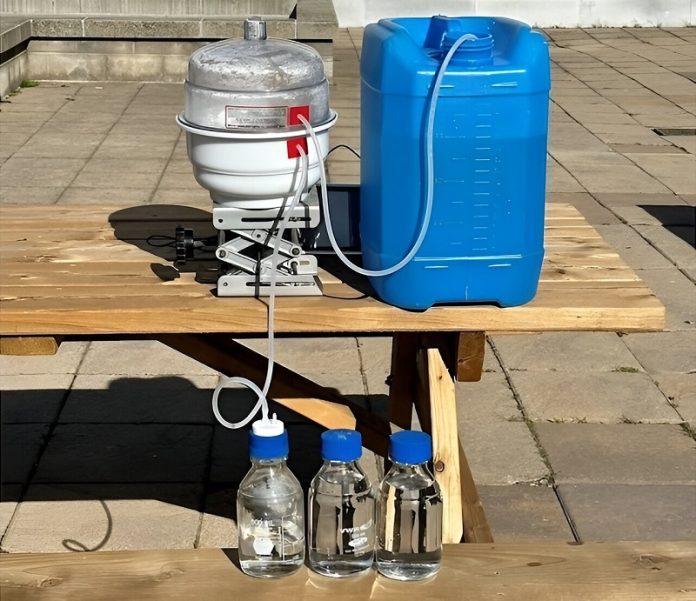
Researchers at the University of Waterloo have created an energy-efficient device that uses solar power to convert seawater into fresh drinking water.
This new technology could provide a solution to the global water shortage, especially for coastal and island communities.
With around 2.2 billion people lacking access to clean water, according to the UN World Water Development Report 2024, this invention is a crucial step toward solving the water crisis.
Current desalination methods rely on energy-intensive systems that use membranes to filter out salt from seawater.
These systems require a lot of maintenance because salt builds up on the surface, blocking water flow and reducing efficiency. This means the systems cannot operate continuously without frequent cleaning.
The team at Waterloo took inspiration from nature, specifically how trees transport water from their roots to their leaves. Their new device mimics this natural process, allowing it to desalinate water without the need for major maintenance.
The study detailing their findings was published in Nature Communications.
Dr. Michael Tam, a professor in Waterloo’s Department of Chemical Engineering, explained, “We looked at how nature handles water, how it evaporates and condenses, and used that idea to build our system.”
The device works by heating seawater to make it evaporate and then condensing the vapor into fresh water. This process happens in a closed cycle, which prevents salt buildup and allows the system to run continuously.
The device is powered by solar energy and can convert about 93% of sunlight into heat energy, making it five times more efficient than current desalination systems. It can produce about 20 liters of fresh water per square meter, which is the amount recommended by the World Health Organization for basic drinking and hygiene needs.
The research team, including Ph.D. students Eva Wang and Weinan Zhao, created the device using nickel foam coated with a special conductive polymer and thermoresponsive pollen particles.
This material absorbs sunlight across the full solar spectrum, converting it into heat. The water is heated and transported upward, similar to how water moves through the capillaries in trees. As the water evaporates, the salt is pushed to the bottom, preventing blockages and ensuring continuous operation.
Dr. Yuning Li, another professor in the Department of Chemical Engineering, helped the team develop the solar-powered system. He said, “This device is not only efficient but also portable, making it ideal for use in remote areas where fresh water is hard to come by.”
The team plans to build a larger prototype that can be tested at sea. If successful, this technology could sustainably provide fresh water to coastal communities and support global efforts to address the water crisis, contributing to several United Nations Sustainable Development Goals.


